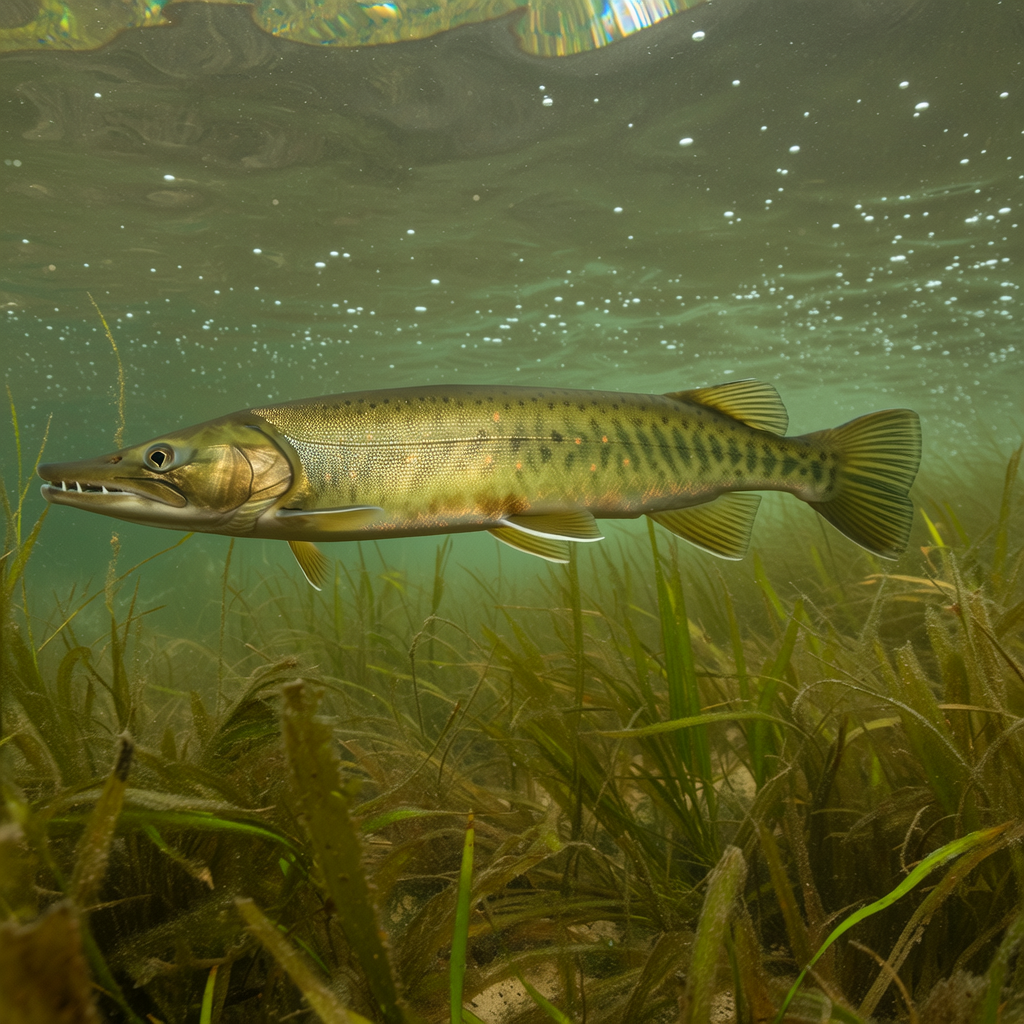Introduction
Welcome to the fascinating world known as Esox or the pike. Esox are highly predatory freshwater fish that can be found in North America, Europe and Asia. These formidable creatures are apex-predators in their aquatic ecosystems because of their elongated bodies, razor-sharp incisors, and powerful jaws. This comprehensive guide will take you on a journey into the fascinating world of esox, exploring its behavior, habitat and feeding habits.
1. The Origins and Classification
Esox is a member of the Esocidae family, which includes five species. Esox lucius is the Northern Pike; Esox masquinongy is Muskellunge; Esox americanus is Chain Pickerel; Esox reichertii is Amur Pike and Esox cisalpinus if Southern Pike. They share many characteristics, but also differ in terms of size and habitat preferences.
2. Physical Characteristics & Adaptations
Esox have a long, slender, and muscular body. The length varies from 60 to 150 centimeters, depending on species. Its muscular build allows it to quickly maneuver through the water and strike its prey at lightning speed. The head of the esox has a large, sharp mouth with teeth facing backwards, allowing it firmly to grasp and hold its prey.
3. Habitat and Distribution
Esox can be found in a variety of aquatic environments including lakes, rivers and ponds. They also inhabit brackish coastal waters. Each species has a specific habitat preference, but they thrive in areas that have abundant vegetation, submerged trees, and other types of cover which serve as ambush spots. The Muskellunge, for instance, prefers warmer water, while the Northern Pike is found in colder lakes of Canada.
4. Feeding Habits
Esox is a predator that feeds on a variety of prey. Its diet is primarily fish, which includes smaller esox, but it also eats amphibians and reptiles as well as birds and small mammals. Esox use the ambush method as their main hunting strategy. It waits in vegetation or near structures, and then attacks its prey quickly.
5. Reproduction and Life Cycle
Esox reproduce mainly in the spring when water temperatures are higher. The females produce adhesive eggs which adhere to vegetation and submerged structures. The eggs hatch in a few weeks and the young esox remain close to the nesting site until they can swim and hunt independently. Esox have relatively long lives, with some living up to 15 or more years.
6. Economic and Ecological Importance
The presence of Esox in aquatic eco-systems has many ecological implications. They control prey populations and prevent overpopulation. They also maintain balance in the ecosystem. Esox is also a popular sport fish, attracting anglers all over the world. Pike fishing is a thriving industry that stimulates local economies by promoting tourism and recreational activities.
7. Fishing Techniques & Tips
Anglers of any skill level can enjoy catching esox. These prized predators can be targeted using a variety of fishing techniques including casting, fly fishing, and trolling. Esox are attracted to lures and tackle that closely resemble their natural prey. Patience and perseverance are essential to success as esox is elusive and difficult to catch.
30. Conclusion
Esox is an aquatic predator that dominates freshwater ecosystems. Researchers, anglers and nature lovers are fascinated by its physical attributes, varied feeding habits and ecological significance. Understanding and conserving the esox population is crucial to maintaining the delicate balance of aquatic eco-systems. This guide is intended to provide valuable insights into the fascinating world of Esox.




